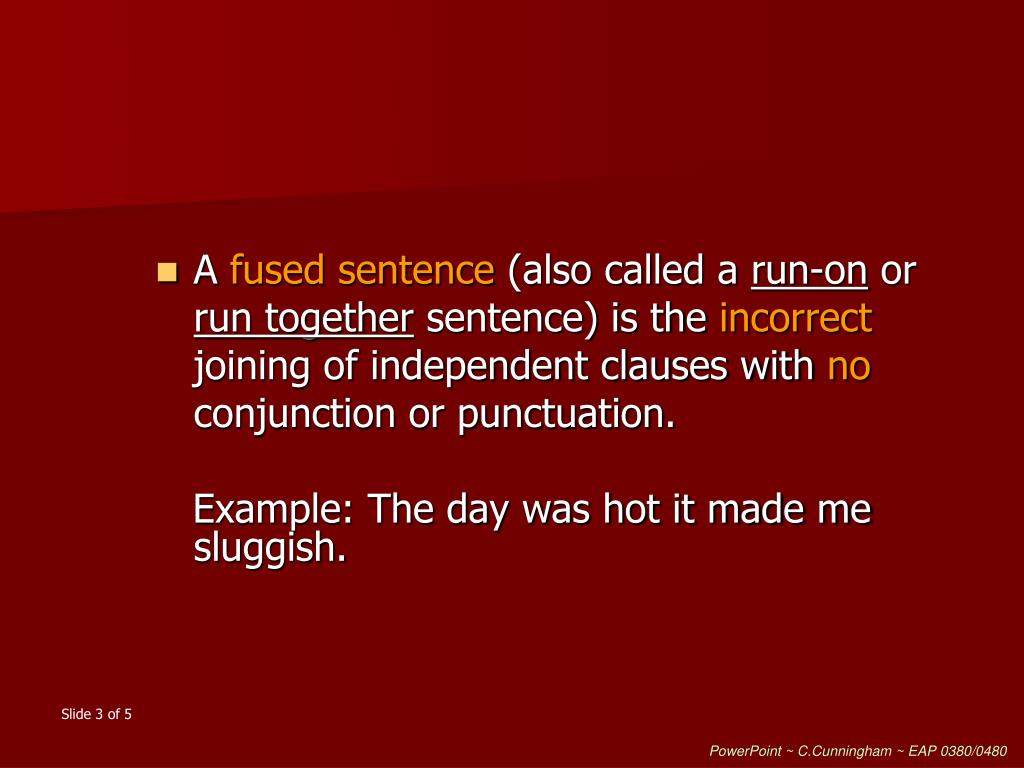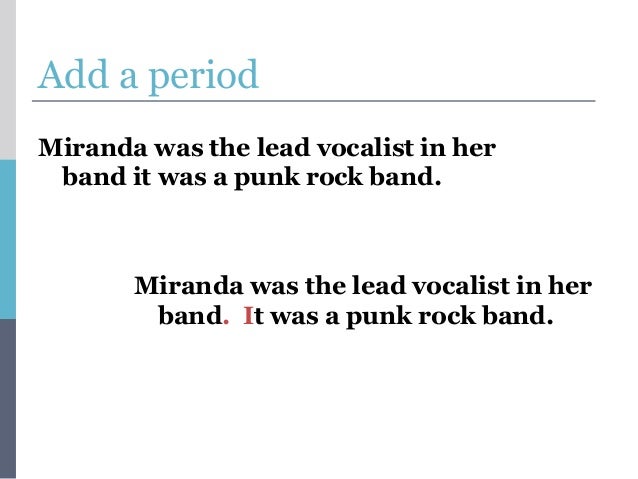

Janet was distraught because she couldn’t find her research paper notes. (sets limits on the ideas and indicates how they are connected and that they are equally important).Īnother very useful way to correct these kinds of sentence errors is to make one of the clauses dependent by adding a subordinating conjunction (because, since, although, unless, while, etc.) before it. Janet was distraught, for she couldn’t find her research paper notes. (sets limits on the ideas but indicates they are connected) Janet was distraught she couldn’t find her research paper notes. (complete separation of the ideas-connection indicated only by juxtaposition) She couldn’t find her research paper notes. Basically what you have to do is to clearly mark where one sentence ends and the other begins-you can do that by putting a period, a semicolon, or a comma coupled with a coordinating conjunction (and, but, or, for, nor, so, yet) between the clauses.Ĭonsider the following fixes for the example in tip number 3. The important thing to know here is that the fix for both the fused sentence and the comma splice is extremely simple-often it’s merely a matter of providing the proper punctuation. However, it also often fails to catch fused sentences-maybe because there aren’t any punctuation marks to signal the software. Note: If you are using a computer, make use of the grammar check it will often catch comma splices.

Martin Luther King is one of America’s greatest orators, his “I Have a Dream” speech is considered a rhetorical masterpiece. Look for a second independent clause that explains, contrasts with or gives an example of information in the first independent clause.Jacob was ill for three days, nevertheless he went to work. Look for a conjunctive adverb or other transitional phrase beginning the second independent clause.Look for a pronoun beginning the second clause.Listen for two independent clauses (two independent thoughts).Read the paragraph aloud and backwards (read the last sentence first, then the next-to-last and so on to isolate each statement and consider it apart from context.).Here are some tips for finding fused sentences and comma splices in your own texts. Notice that the length of the sentence has very little to do with creating a fused sentence or a comma splice (they can be any length) it is simply a matter of inappropriate punctuation.įortunately, these kinds of sentence errors commonly follow certain patterns, and that means we can look for particular signals to clue us in that we should check for the appropriate punctuation. In the first statement, the independent clauses (or sentences) are The lemonade was too tart and However, James drank it anyway.Īnd in the second sentence, the independent clauses are Ernest Hemingway’s style is quite distinctive and he makes extensive use of the compound sentence, for instance, to create an impression of balanced tension. Each of them tries to connect two independent clauses with a comma-a punctuation mark that is too puny for the job. The previous statements are both comma splices. The lemonade was too tart, however, James drank it anyway.Įrnest Hemingway’s style is quite distinctive, he makes extensive use of the compound sentence, for instance, to create an impression of balanced tension. Now consider these statements again, whisper them to yourself. The fused sentence in the example above resulted because the writer didn’t mark the end of one thought before beginning another. And the other is It required five different texts. You probably heard and recognized two different sentences, two different complete thoughts. The course was difficult it required five different texts. The key to fixing both kinds of sentence errors lies in our ability to recognize a sentence, a complete thought, when we hear it.Ĭonsider the following statement whisper it to yourself. Fortunately, they are relatively easy to fix. Unfortunately, they give readers the impression of disorganization and carelessness and often cause confusion. Both kinds are some of the most common sentence errors we make as writers and are the result of trying to cram too much information into one sentence, often because we are writing at white-hot speed and fail to go back to revise carefully. Fused sentences (aka run-ons) occur when we join them with no punctuation whatsoever. Comma splices are sentence errors we create by using a comma alone to attach two sentences to each other.


 0 kommentar(er)
0 kommentar(er)
